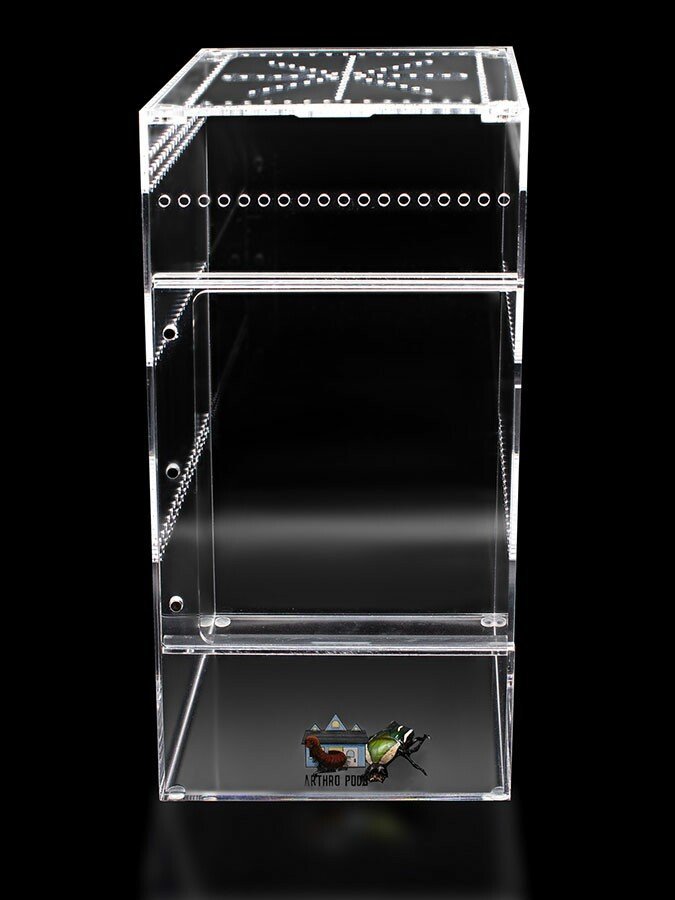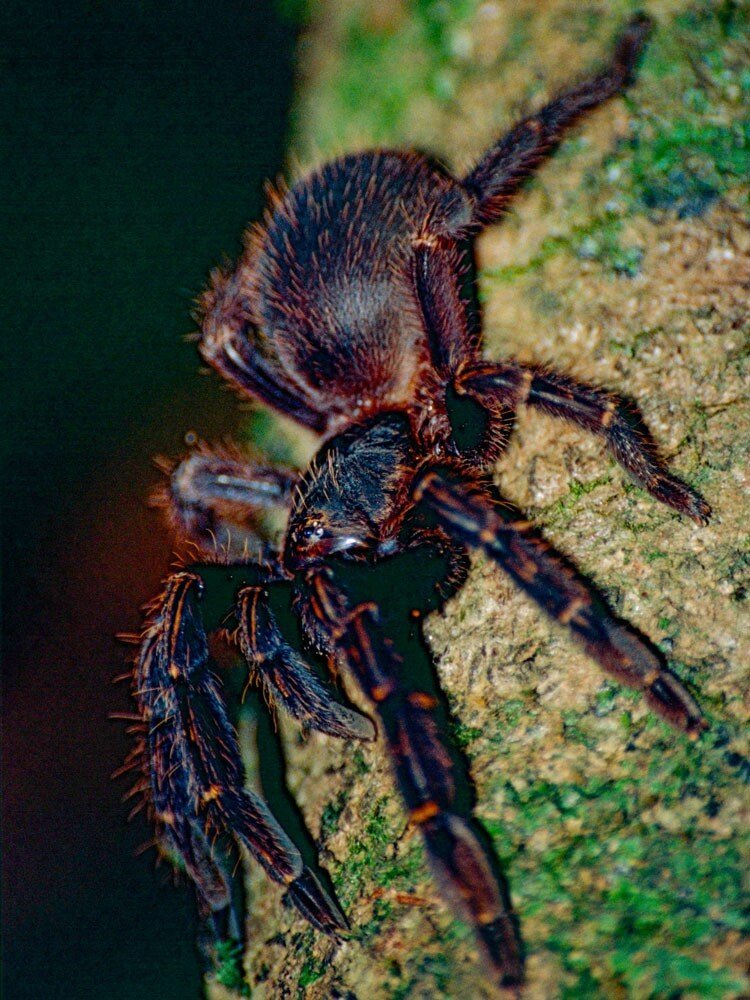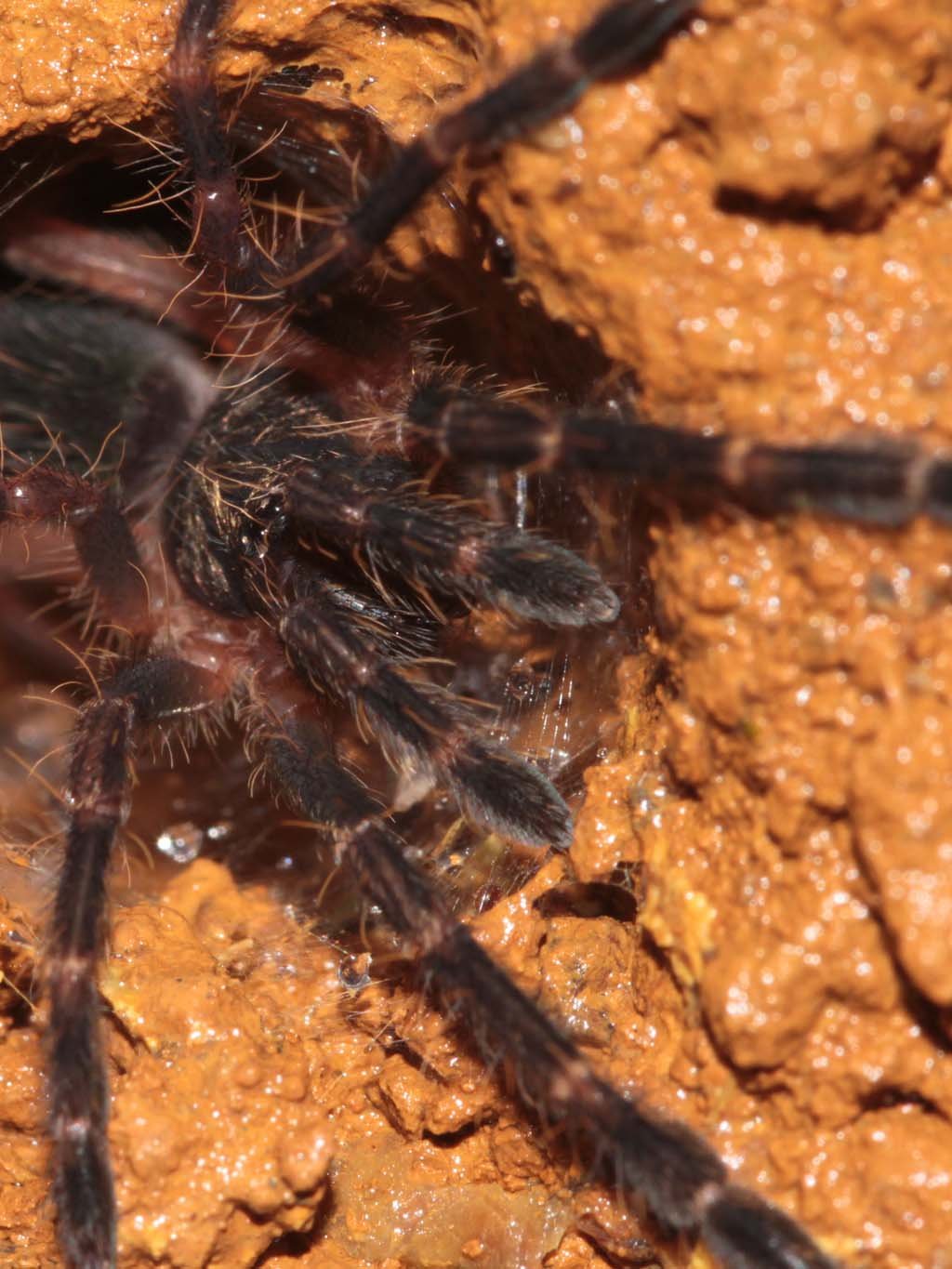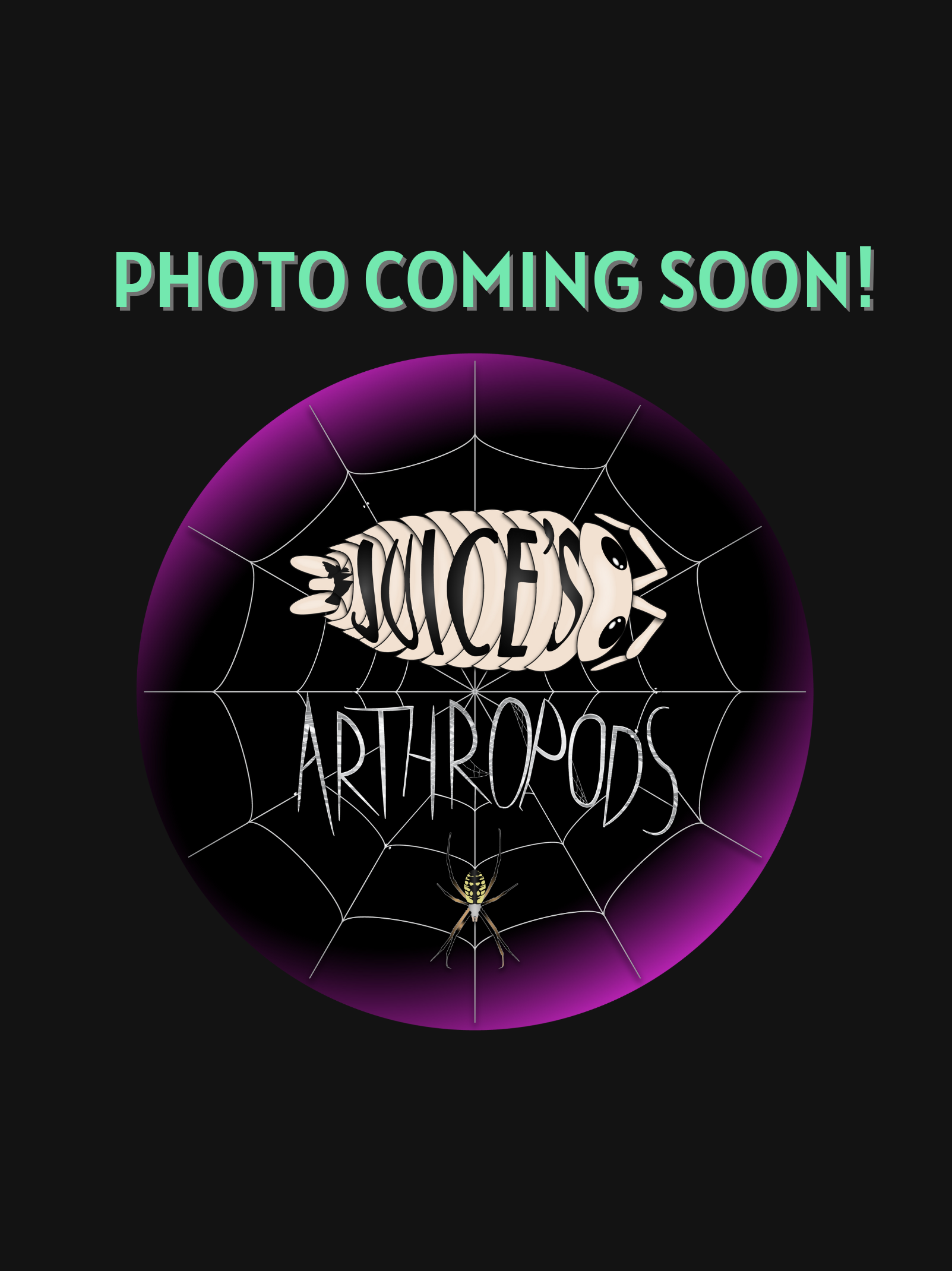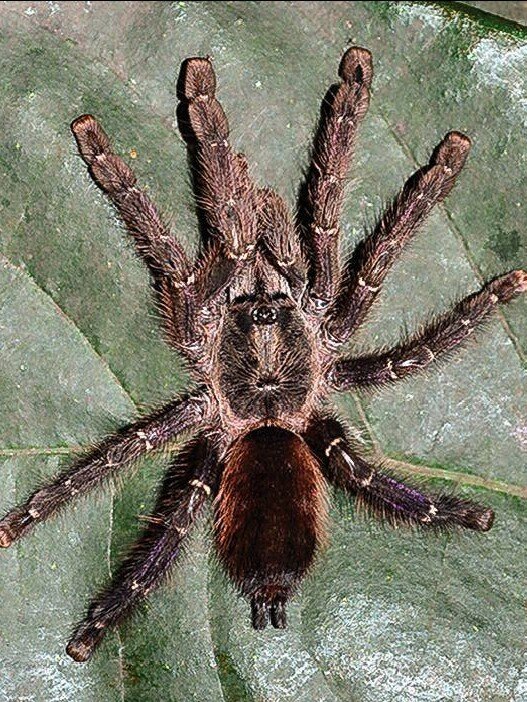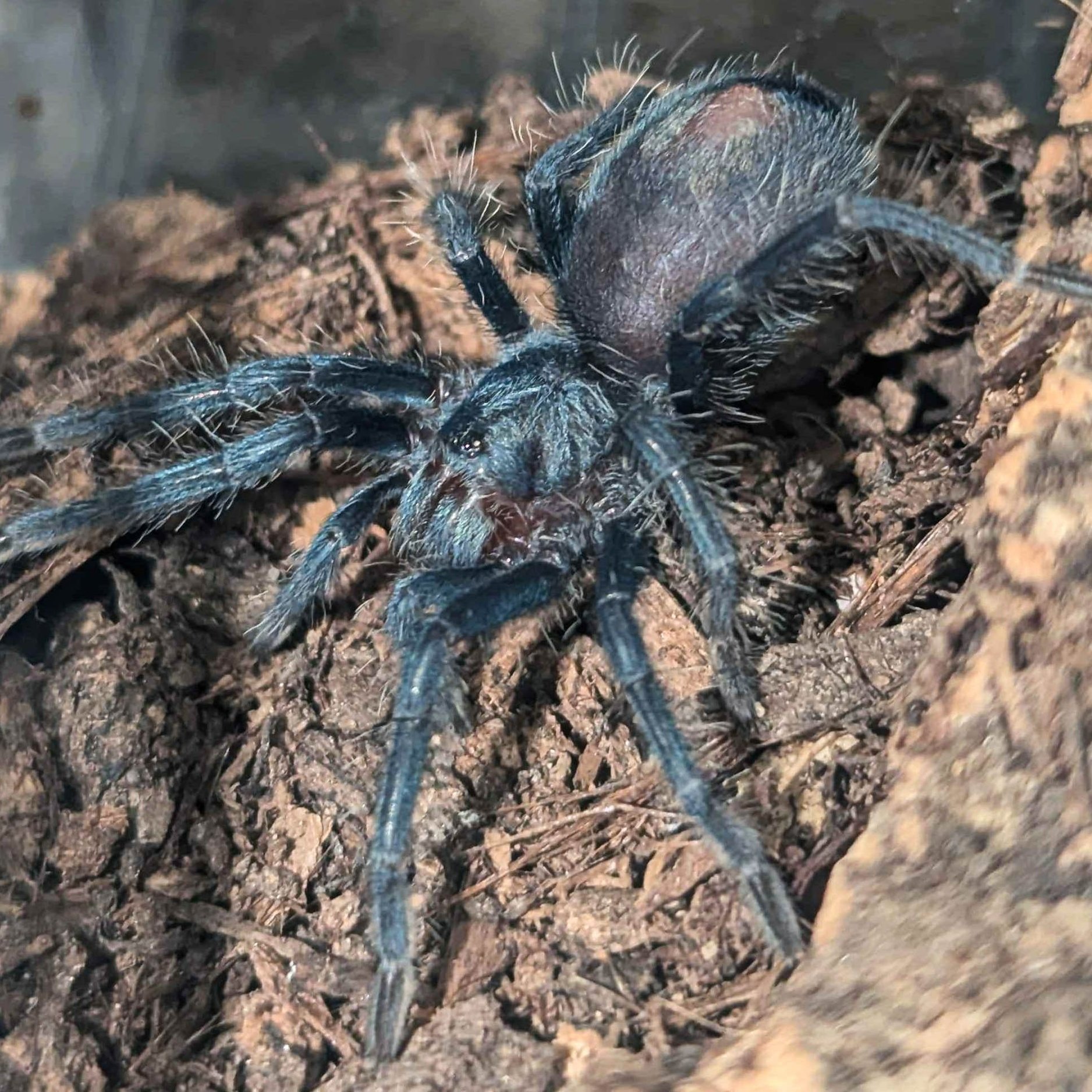Avicularia avicularia
Commonly referred to as “Avic Avic,” “Guyana Pinktoe,” or “Pink Toe” Tarantula, these make incredible tarantulas for those who’ve owned a jumping spider and want to dip their toes into an arboreal tarantula. Although more prone to using their feces as a projectile than threat posing, these species are incredibly user-friendly. One thing of note is that you must keep the humidity slightly elevated. Misting their web (never the tarantula directly!) will also help keep them hydrated! Very novice tarantula with minimal risk or concerns for the newest of keepers!
Commonly referred to as “Avic Avic,” “Guyana Pinktoe,” or “Pink Toe” Tarantula, these make incredible tarantulas for those who’ve owned a jumping spider and want to dip their toes into an arboreal tarantula. Although more prone to using their feces as a projectile than threat posing, these species are incredibly user-friendly. One thing of note is that you must keep the humidity slightly elevated. Misting their web (never the tarantula directly!) will also help keep them hydrated! Very novice tarantula with minimal risk or concerns for the newest of keepers!
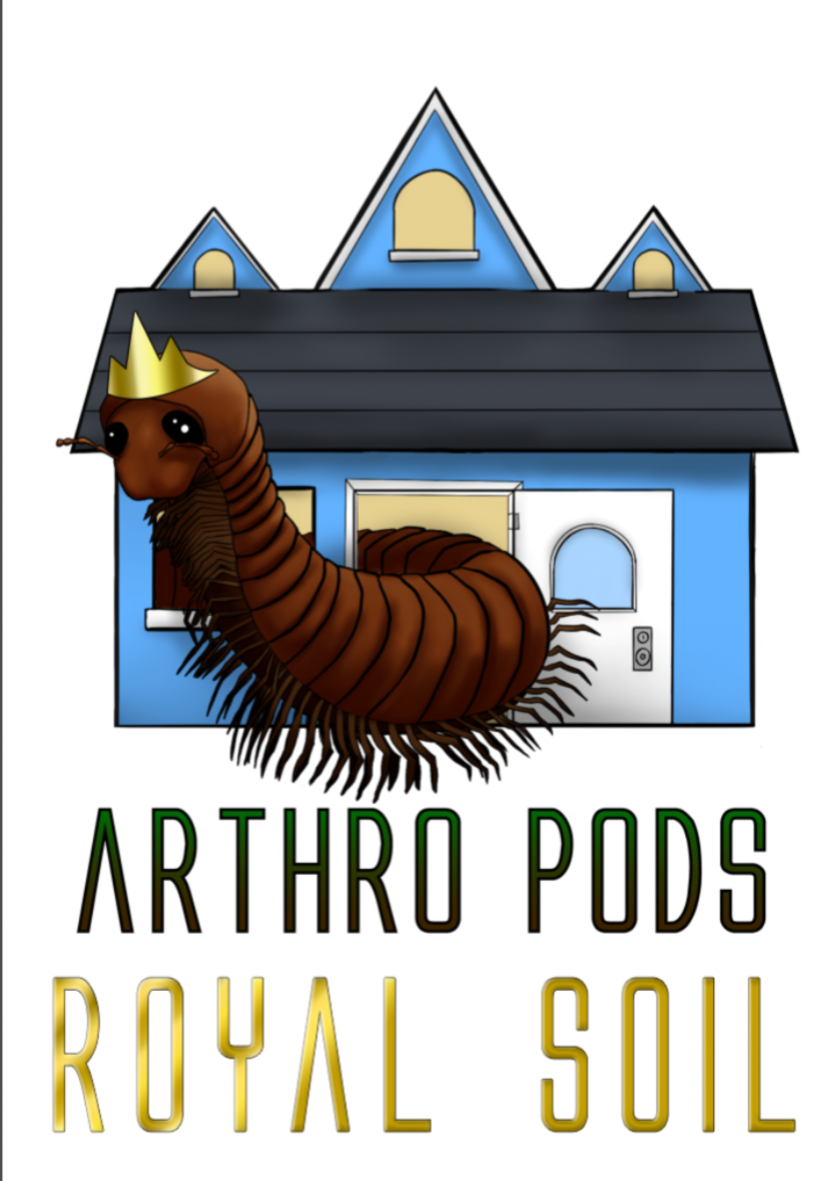
Commonly referred to as “Avic Avic,” “Guyana Pinktoe,” or “Pink Toe” Tarantula, these make incredible tarantulas for those who’ve owned a jumping spider and want to dip their toes into an arboreal tarantula. Although more prone to using their feces as a projectile than threat posing, these species are incredibly user-friendly. One thing of note is that you must keep the humidity slightly elevated. Misting their web (never the tarantula directly!) will also help keep them hydrated! Very novice tarantula with minimal risk or concerns for the newest of keepers!
What's the ideal diet for a Guyana Pinktoe Tarantula?
All Tarantulas can eat a variety of feeders. Stick to crickets, dubia roaches, silkworms, horned worms occasionally, and a superworm or mealworm as the occasional treat!
How should I keep a Guyana Pinktoe Tarantula?
For this particular creature, you can start with a small Arboreal Bliss enclosure, and when they get to be about ⅓ the size, you will want to upgrade to a medium or large Arboreal Bliss enclosure. Feed them as slings once a week, twice if their opisthosoma (abdomen) looks small, but if the opisthosoma is wider than their prosoma (pneumothorax), then wait a couple of days to feed. For juveniles or adults, stick to feeding once a week, nothing larger than their opisthosoma. Make sure to keep a full water dish at all times; wider and deeper is fine. Your tarantula can’t drown; they float on water.
How long could a Guyana Pinktoe Tarantula live?
Females are believed to live around 6-9 years, with males only living between 2-3 years. All estimates are based on multiple sources.
Some photos provided by iNaturalist, credit to:
Paul Prior, some rights reserved (CC BY)
Vincent A. Vos, some rights reserved (CC BY)
Lucas Bernardinelli, some rights reserved (CC BY)
Guillaume Delaitre, some rights reserved (CC BY)
Matthew Lindsey, some rights reserved (CC BY)
Gerry van Tonder, some rights reserved (CC BY)









